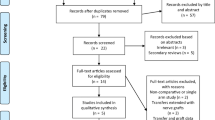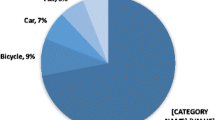Abstract
Background
Body mass index (BMI) has recently been identified as a predictor of outcomes following reconstructive surgery of shoulder palsies. In this study, we sought to determine if the same holds true for the reconstruction of elbow flexion.
Methods
Forty patients who had undergone partial ulnar-to-biceps nerve transfer (Oberlin’s procedure) for shoulder palsy were assessed and compared against18 previously reported patients who had undergone reconstruction for elbow palsies. The British Medical Research Council (BMRC) scale and an index dividing shoulder abduction strength in the affected arm by healthy arm were recorded. All patients had undergone surgery within 12 months of injury and had ≥12 months of follow-up.
Results
M4 or M3 biceps strength was obtained in 90 % of patients. Final strength on the affected side averaged 5.8 kg, versus 20.2 kg on the normal side, for a mean recovery index score of 0.30. In this sample of 40 patients, BMI did not predict percentage strength or BMRC grade recovery. Neither did age, number of roots involved, the affected side, nor time to surgery. Comparing patients with elbow versus shoulder reconstruction, there were no differences, except that patients undergoing Oberlin’s procedure had a statistically longer duration of time between injury and surgical repair (7.4 vs 5.1 months, p < 0.006).
Conclusions
Our data suggest that proximal muscle re-innervation is functionally more dependent upon BMI than distal re-innervation, likely because proximal muscles must support the weight of the entire extremity, while more distal muscles do not. BMI should be taken into consideration when planning surgery




Similar content being viewed by others
References
Aparecida Leandro-Merhi V, Luiz Braga de Aquino J, Gonzaga Teixeira de Camargo J (2012) Agreement between body mass index, calf circumference, arm circumference, habitual energy intake and the MNA in hospitalized elderly. J Nutr Health Aging 16:128–132
Cooley SM, Donnelly JC, Walsh T, Durnea U, Collins C, Rodeck CH, Hindmarsh PC, Geary MP (2011) The relationship between body mass index and mid-arm circumference in a pregnant population. J Obstet Gynaecol 31:594–596
Elhassan B, Bishop AT, Hartzler RU, Shin AY, Spinner RJ (2012) Tendon transfer options about the shoulder in patients with brachial plexus injury. J Bone Joint Surg Am 94:1391–1398
Faglioni W Jr, Siqueira MG, Martins RS, Heise CO, Foroni L (2014) The epidemiology of adult traumatic brachial plexus lesions in a large metropolis. Acta Neurochir (Wein) 156:1025–1028
Jivan S, Kumar N, Wiberg M, Kay S (2009) The influence of pre- surgical delay on functional outcome after reconstruction of brachial plexus injuries. J Plast Reconstr Aesthet Surg 62:472–479
Khadivzadeh T (2002) Mid upper arm and calf circumferences as indicators of nutritional status in women of reproductive age. East Mediterr Health J 8:612–618
Lee JY, Kircher MF, Spinner RJ, Bishop AT, Shin AY (2012) Factors affecting outcome of triceps motor branch transfer for isolated axillary nerve injury. J Hand Surg [Am] 37:2350–2356
Luedemann W, Hamm M, Blömer U, Samii M, Tatagiba M (2002) Brachial plexus neurotization with donor phrenic nerves and its effect on pulmonary function. J Neurosurg 96:523–526
Malessy MJ, van Duinen SG, Feirabend HK, Thomeer RT (1999) Correlation between histopathological findings in C-5 and C-6 nerve stumps and motor recovery following nerve grafting for repair of brachial plexus injury. J Neurosurg 91:636–644
Martins RS, Siqueira MG, Heise CO, Foroni L, Teixeira MJ (2013) A prospective study comparing single and double fascicular transfer to restore elbow flexion after brachial plexus injury. Neurosurgery 72:709–714
Merrell GA, Barrie KA, Katz DL, Wolfe SW (2001) Results of nerve transfer techniques for restoration of shoulder and elbow function in the context of a meta-analysis of the English literature. J Hand Surg [Am] 26:303–314
Midha R (2004) Nerve transfers for severe brachial plexus injuries: a review. Neurosurg Focus 15:E5
Oberlin C, Beal D, Leechavengvongs S, Salon A, Dauge MC, Sarcy JJ (1994) Nerve transfer to biceps muscle using a part of ulnar nerve for C5-C6 avulsion of the brachial plexus: anatomical study and report of four cases. J Hand Surg [Am] 19:232–237
Park JH, Restrepo C, Norton R, Mandel S, Sharkey PF, Parvizi J (2013) Common peroneal nerve palsy following total knee arthroplasty: prognostic factors and course of recovery. J Arthroplasty 28:1538–1542
Socolovsky M, Di Masi G, Battaglia D (2011) Use of long autologous nerve grafts in brachial plexus reconstruction: factors that affect the outcome. Acta Neurochir (Wein) 153:2231–2240
Socolovsky M, Di Masi G, Bonilla G, Malessy M (2014) Spinal to accessory nerve transfer in traumatic brachial plexus palsy: is body mass index a predictor of outcome? Acta Neurochir (Wein) 156:159–163
Socolovsky M, Paez MD (2013) A literature review of intercostal-to-musculocutaneous-nerve transfers in brachial plexus injury patients: Does body mass index influence results in Eastern versus Western countries? Surg Neurol Int 4:152
Socolovsky M, Martins RS, Di Masi G, Siqueira M (2012) Upper brachial plexus injuries: grafts vs ulnar fascicle transfer to restore biceps muscle function. Neurosurgery 71(2 Suppl Operative):ons227–ons232
Conflicts of interest
None.
Author information
Authors and Affiliations
Corresponding author
Rights and permissions
About this article
Cite this article
Socolovsky, M., Martins, R.S., Di Masi, G. et al. Influence of body mass index on the outcome of brachial plexus surgery: are there any differences between elbow and shoulder results?. Acta Neurochir 156, 2337–2344 (2014). https://doi.org/10.1007/s00701-014-2256-9
Received:
Accepted:
Published:
Issue Date:
DOI: https://doi.org/10.1007/s00701-014-2256-9




